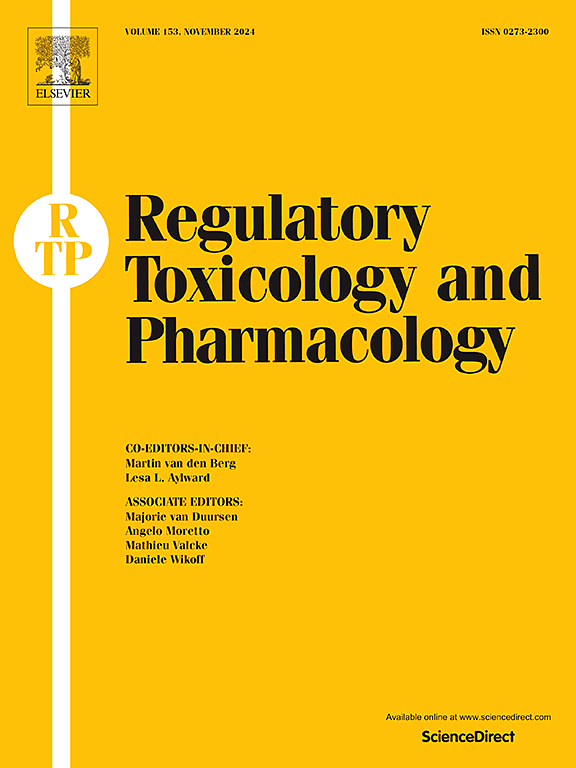Matched molecular pairs-driven read-across for the prediction of genotoxicity of plant protection product residues
IF 3.5
4区 医学
Q1 MEDICINE, LEGAL
引用次数: 0
Abstract
In dietary risk assessment of plant protection products, residues of active ingredients and their metabolites need to be evaluated for their genotoxic potential. The European Food Safety Authority recommend a tiered approach focussing assessment and testing on classes of similar chemicals. To characterise similarity, a matched molecular pairs approach has been developed and applied to datasests of sulphonylurea herbicides, strobilurins fungicides and α-chloroacetamide herbicides for which either Ames, chromosomal aberration or micronucleus test results are publicly available. The approach is exemplified with four case studies illustrating how matched molecular pairs analysis can be used to identify analogues that cover the structural domain of the chemical for which a data-gap exists. The method is a robust and reproducible approach to such read-across predictions, with the potential to reduce unnecessary testing.
匹配分子对驱动的跨读预测植保产品残留的遗传毒性
在植物保护产品的膳食风险评估中,需要对活性成分及其代谢物的残留进行遗传毒性评估。欧洲食品安全局(European Food Safety Authority)建议采取分级方法,重点评估和测试同类化学品。为了描述相似性,已经开发了一种匹配的分子对方法,并将其应用于磺脲类除草剂、strobilurins类杀菌剂和α-氯乙酰胺类除草剂的数据测试,这些除草剂的Ames、染色体畸变或微核试验结果都是公开的。该方法以四个案例研究为例,说明如何使用匹配的分子对分析来识别覆盖数据缺口存在的化学结构域的类似物。该方法是一种健壮的、可重复的方法,可以实现这样的跨读预测,并有可能减少不必要的测试。
本文章由计算机程序翻译,如有差异,请以英文原文为准。
求助全文
约1分钟内获得全文
求助全文
来源期刊
CiteScore
6.70
自引率
8.80%
发文量
147
审稿时长
58 days
期刊介绍:
Regulatory Toxicology and Pharmacology publishes peer reviewed articles that involve the generation, evaluation, and interpretation of experimental animal and human data that are of direct importance and relevance for regulatory authorities with respect to toxicological and pharmacological regulations in society. All peer-reviewed articles that are published should be devoted to improve the protection of human health and environment. Reviews and discussions are welcomed that address legal and/or regulatory decisions with respect to risk assessment and management of toxicological and pharmacological compounds on a scientific basis. It addresses an international readership of scientists, risk assessors and managers, and other professionals active in the field of human and environmental health.
Types of peer-reviewed articles published:
-Original research articles of relevance for regulatory aspects covering aspects including, but not limited to:
1.Factors influencing human sensitivity
2.Exposure science related to risk assessment
3.Alternative toxicological test methods
4.Frameworks for evaluation and integration of data in regulatory evaluations
5.Harmonization across regulatory agencies
6.Read-across methods and evaluations
-Contemporary Reviews on policy related Research issues
-Letters to the Editor
-Guest Editorials (by Invitation)

 求助内容:
求助内容: 应助结果提醒方式:
应助结果提醒方式:


